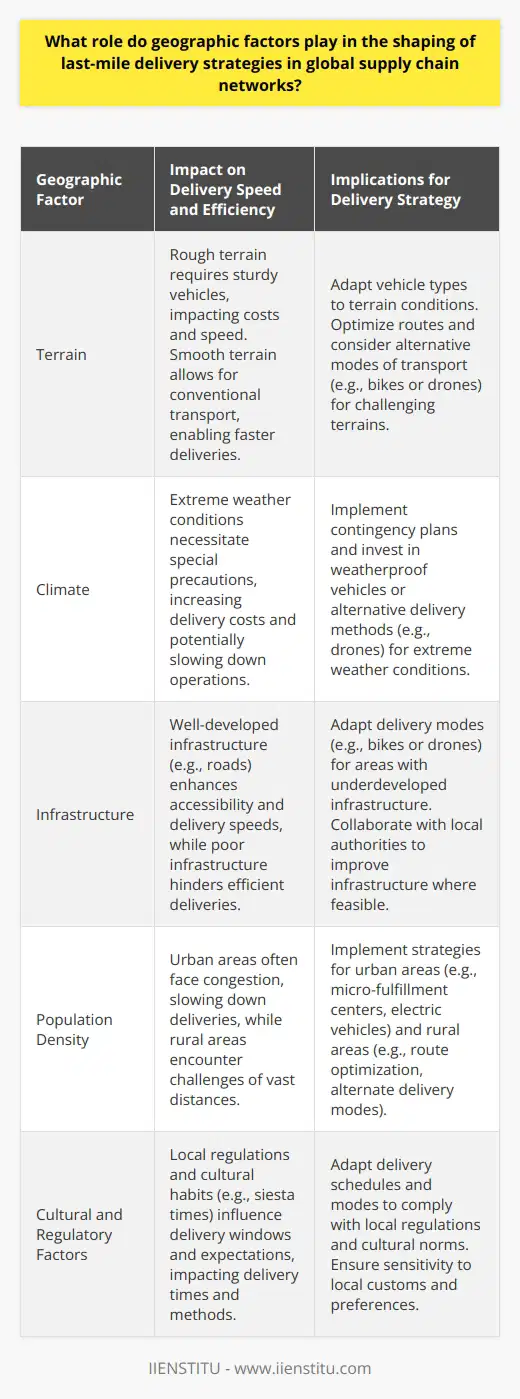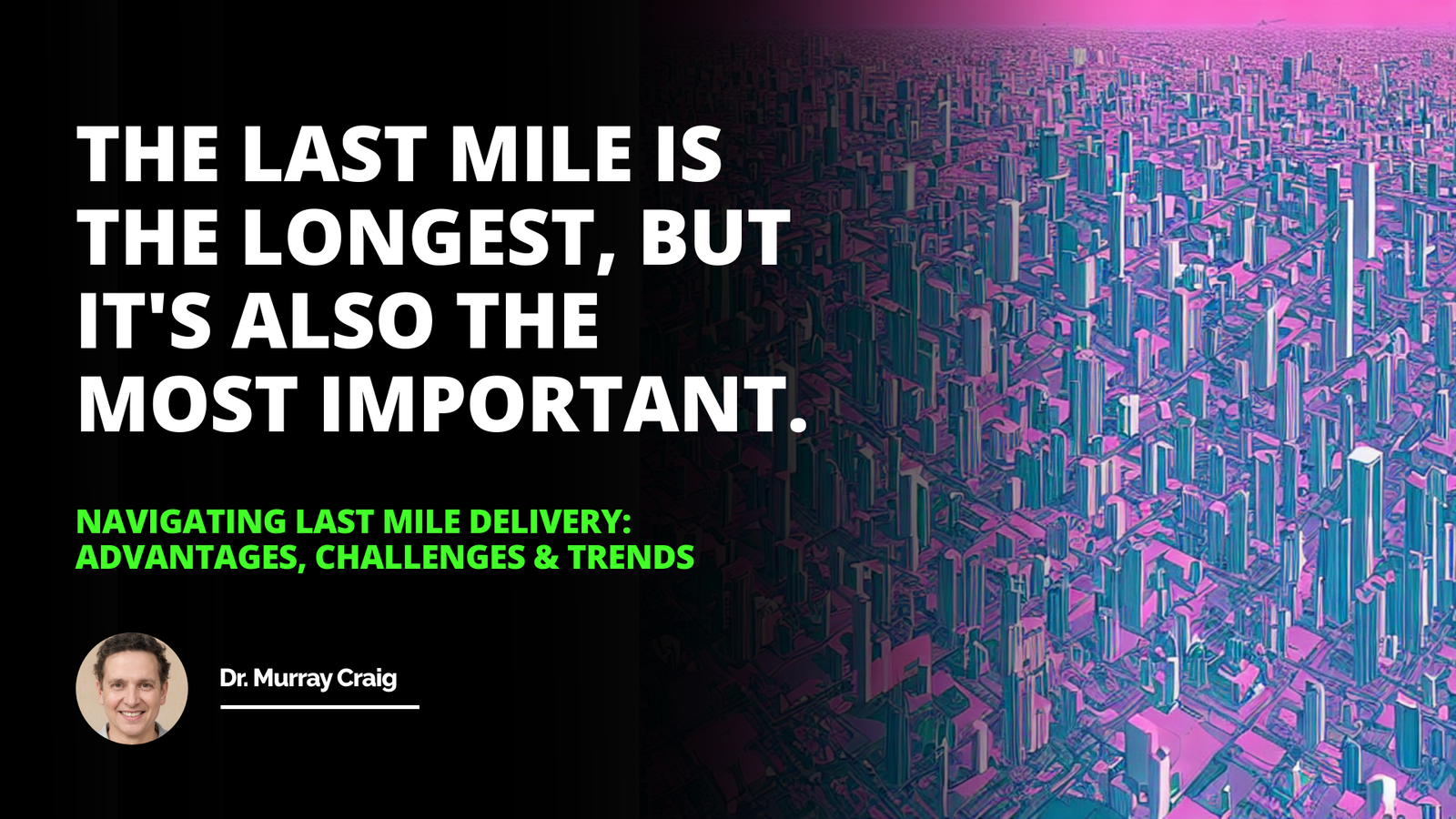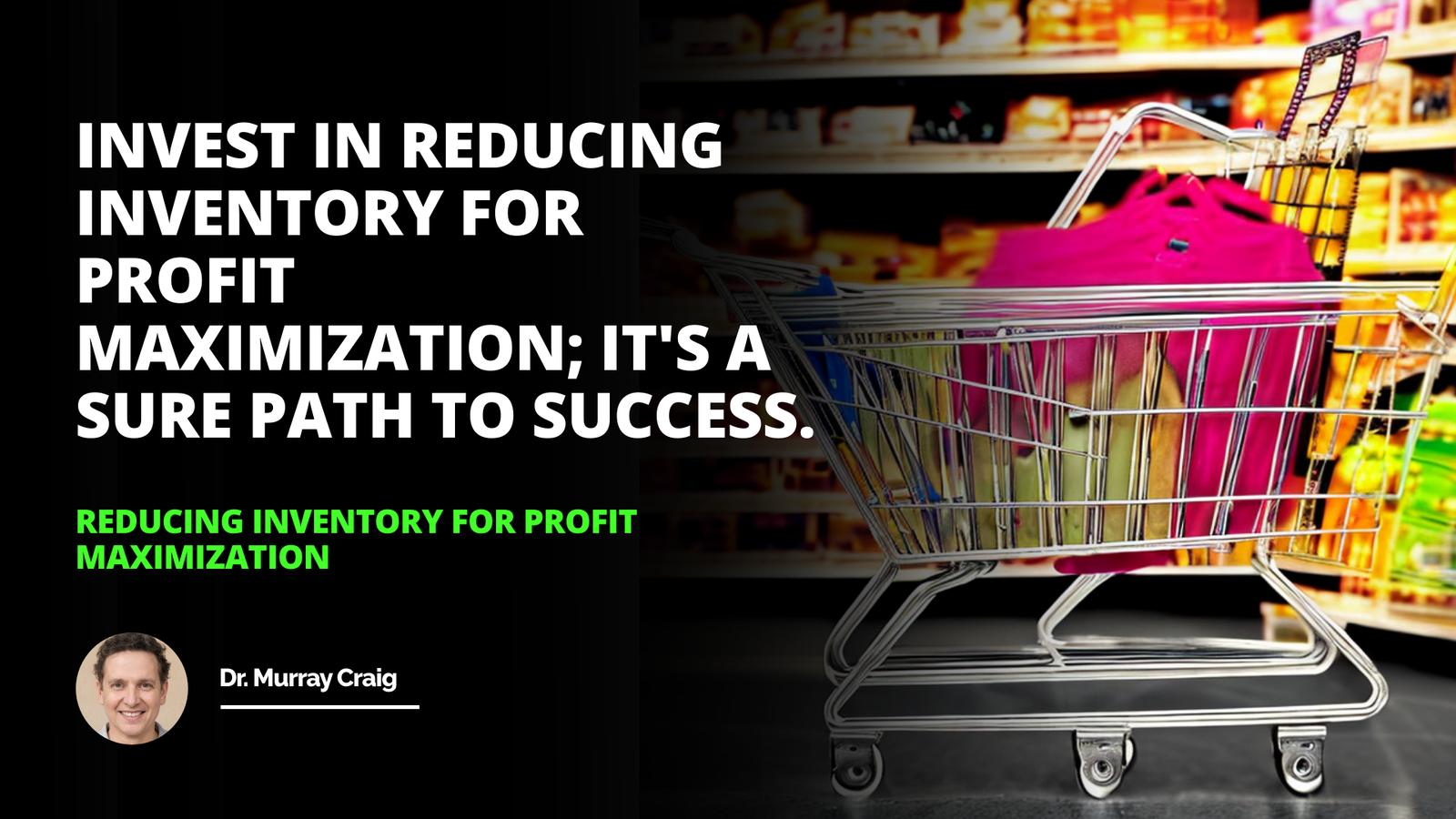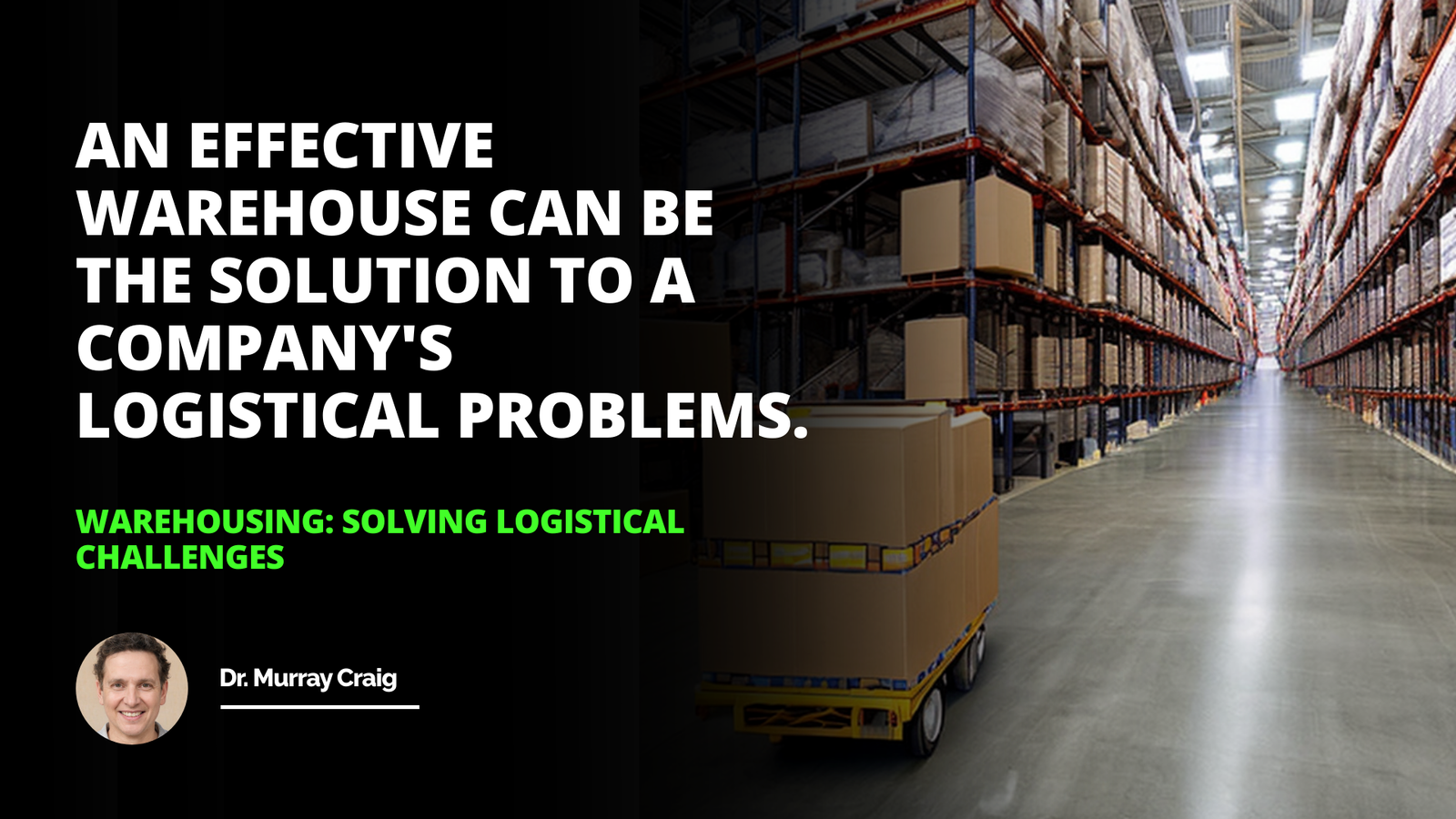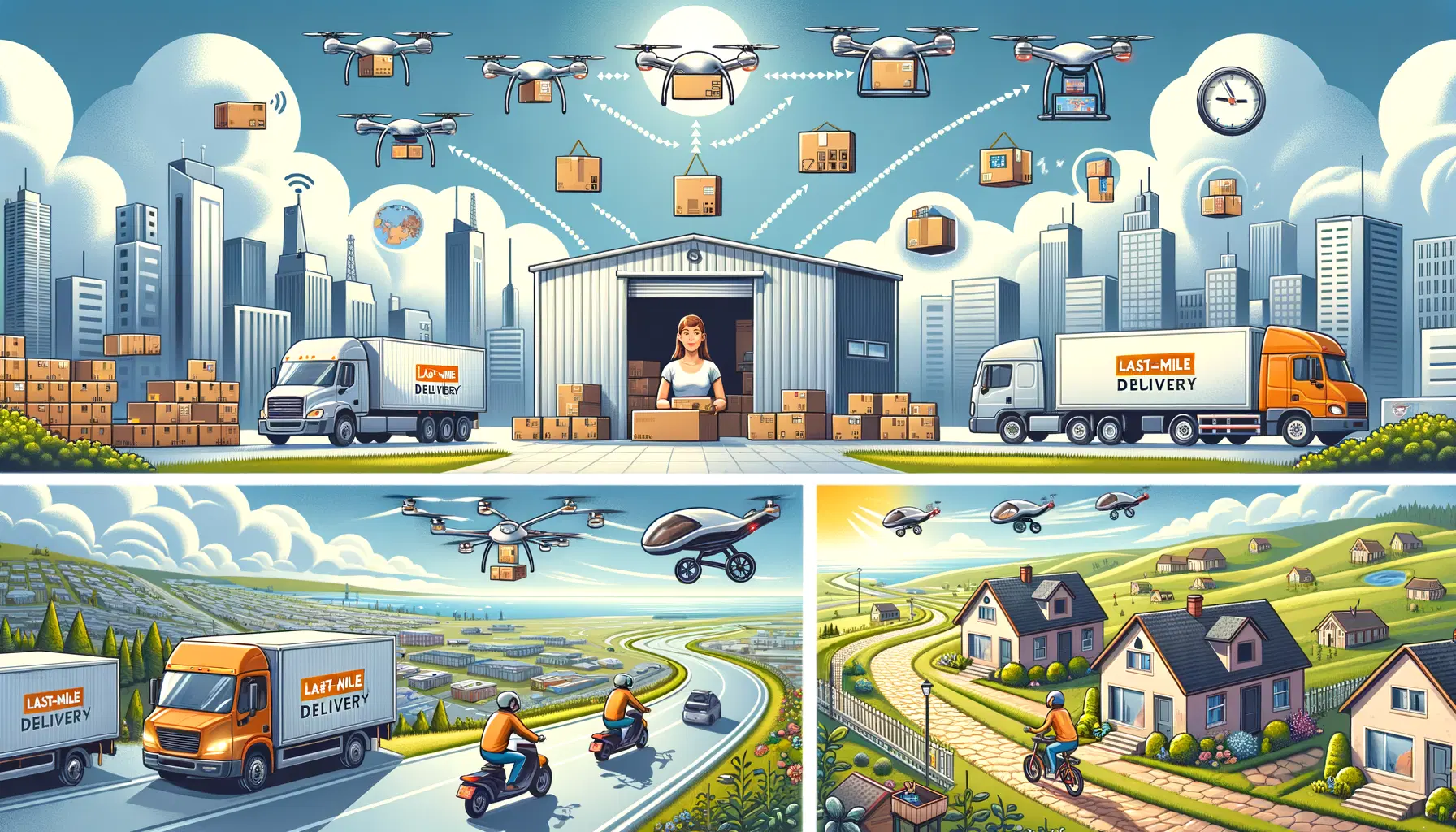
The concept of Last-Mile Delivery has become a cornerstone in the intricate web of supply chain management. Its impact resonates through the final stretch of the delivery process, where goods move from distribution centers to their final destination: the customer's doorstep. In the context of an increasingly digital and convenience-driven economy, the efficiency of this final leg is paramount.
This phase is not only mission-critical due to its direct visibility to the consumer, but also because of its considerable implications for business efficiency and customer satisfaction. Understanding and strategically implementing this part of logistics can mean the difference between a thriving business and one that struggles with customer retention.
Brief Definition of Last-Mile Delivery
Last-Mile Delivery refers to the final step in the delivery process—the point at which goods are transported from a transportation hub to the final delivery destination. Typically, this stage is characterized by the shipment of goods to individual customers rather than bulk transfers to warehouses or stores, which presents unique challenges and opportunities for optimization.
Efficient Material Handling Techniques For Loading Moving And Filling
Long Tail Keyword For S&op Success İn Supply Chain Management
Overview of its Relevance in the Modern Business World
In the modern business climate, e-commerce has necessitated a seismic shift in how products are delivered to consumers. Speed, reliability, and cost-efficiency of Last-Mile Delivery play a critical role in this transformation. Companies across the globe are leveraging innovative logistics strategies to gain competitive advantages, making the optimization of the last-mile a central facet of contemporary commerce.
Importance of its Strategic Implementation for Business Success
Strategic implementation of Last-Mile Delivery can spell business success through improved customer loyalty and a stronger brand reputation. Moreover, it has a direct correlation to operational costs, which in turn affects pricing, company margins, and overall profitability. In essence, the last mile is not merely a delivery challenge; it is a strategic imperative.
Understanding Last-Mile Delivery
Detailed Explanation of Last-Mile Delivery: Last-Mile Delivery, though the shortest segment in the supply chain, can be the most complex and cost-intensive. It involves an array of activities including route planning, parcel tracking, and meeting consumer expectations for prompt delivery—and often, this happens within the congested frameworks of urban landscapes. Timeliness and efficiency in this critical phase are directly proportional to customer satisfaction.
Importance of Last-Mile Delivery for Supply Chain and Logistics: In supply chain and logistics, the last mile is a focal point for innovation and optimization due to its cost impact, accounting for a significant chunk of the total delivery cost. It's also a barometer for customer satisfaction; the ability to deliver swiftly and reliably is often the most memorable part of the customer's purchase experience. Therefore, professionals seeking to advance their skills in this domain may find immense value in pursuing logistics management courses that can provide a comprehensive understanding of the nuances of Last-Mile Delivery.
The Role of Last-Mile Delivery in Shaping Customer Experience: The final interaction a customer has with a brand, often through the receipt of their purchase, is mediated by Last-Mile Delivery. This stage has the power to make or break the customer's perception of a company. As such, the last mile is as much part of the customer service experience as it is of logistics. Positive last-mile experiences can lead to repeat business and referrals, while failures in this stage can have a damaging ripple effect on company bottom lines and customer loyalty.
Challenges in Last-Mile Delivery
Exploration of the Potential Obstacles and Challenges in Carrying Out Effective Last-Mile Delivery: Last-Mile Delivery is fraught with challenges that include but are not limited to traffic congestion, varying delivery windows, and the need for real-time tracking capabilities. Moreover, customer demands for faster, cheaper deliveries adds pressure to already thin margins. Addressing these challenges requires innovative approaches to route optimization, scalable delivery models, and customer communication strategies.
Examples of Businesses Struggling with Last-Mile Delivery: Several businesses, particularly small to medium-sized enterprises, face notable struggles in their last-mile delivery operations. For instance, limited logistical infrastructures and resource constraints can make it challenging to match the delivery capabilities of larger competitors. Without the leverage of expansive distribution networks or advanced software systems, these businesses often encounter inefficiencies and inconsistencies that can impair customer perceptions.
Discussing Solutions to These Challenges: Solutions to Last-Mile Delivery issues can range from strategic partnerships with third-party logistics providers to investments in technology such as AI and advanced analytics for route optimization. Additionally, the adoption of local micro-fulfillment centers can help reduce distances to customers, thereby curtailing costs and improving delivery speeds. Emphasizing training through certificate courses online can also equip teams with the skills necessary to enhance performance and drive innovation in last-mile operations.
Implementing Successful Last-Mile Delivery
Expert Tips and Strategies for Effective Implementation: Deploying a successful Last-Mile Delivery strategy requires a thoughtful approach to logistics management—an approach that balances efficiency with cost-effectiveness. This includes staying aware of the delivery landscape, using data to inform decision-making, and optimizing routes for maximum productivity. Flexibility, proactive customer service, and the ability to scale operations up or down based on demand are also crucial for success.
The Role of Technology in Facilitating Last-Mile Delivery: Technology is a key enabler in improving Last-Mile Delivery performance. From mobile applications that offer customers real-time tracking updates to drones and autonomous vehicles which promise to revolutionize delivery processes, the potential for technology to streamline the last mile is immense. Leveraging sophisticated software that can analyze traffic patterns, predict delivery windows, and facilitate seamless communication between stakeholders is becoming a competitive necessity.
Examples of Successful Businesses Employing Effective Last-Mile Delivery Strategies: Businesses that have mastered the art of Last-Mile Delivery often share common traits: a forward-thinking approach, a willingness to adopt technology, and a dedication to customer-centric service. Companies such as Amazon set the gold standard with their Prime delivery service, while logistics giants like UPS and FedEx continually invest in technologies and strategies to shave off minutes and miles in last-mile routes, proving that efficiency and innovation are key to success.
The Future of Last-Mile Delivery
The Impact of Emerging Trends and Technologies on Last-Mile Delivery: The landscape of Last-Mile Delivery is fast evolving with the advent of new technologies and consumer trends. Concepts such as urban fulfillment centers and crowdsourced delivery platforms look set to redefine the traditional delivery model. In parallel, the rise of machine learning and AI technologies offer predictive capabilities that can foresee and mitigate potential delays, transforming how logistics companies pre-empt and respond to challenges.
Predictions for the Future of Last-Mile Delivery: Looking ahead, Last-Mile Delivery is likely to become more personalized, efficient, and environmentally sustainable. Innovations such as electric vehicle fleets, delivery by drones, and smart lockers could drastically reduce emissions and urban congestion. Meanwhile, predictive analytics could enable even more precise delivery slots catering to individual preferences, cementing the last mile's role as a key differentiator in the competitive e-commerce landscape.
Advice for Businesses to Stay Ahead of the Curve: To navigate the future landscape successfully, businesses must keep a pulse on emerging trends, continually invest in staff training and development, and adapt to shifting consumer demands. The willingness to experiment with new delivery models, the investment in green technologies, and the maintenance of a robust digital infrastructure will be vital. As the pace of change accelerates, a commitment to excellence in Last-Mile Delivery is an investment in future-readiness.
The intricacies of an efficient Last-Mile Delivery cannot be overstated—it remains a crucial determinant of customer satisfaction and business performance. While challenges exist in numerous forms, the strategies and solutions to overcome them are readily available, especially to those who invest in their understanding through continued education and adaptation.
Emphasizing its importance, the potential challenges, and the strategies for successful implementation highlights Last-Mile Delivery as not just a logistic hurdle, but as a significant opportunity for businesses to differentiate themselves. By proactively addressing these challenges and adopting innovative solutions, businesses can not only enhance their last-mile processes but also create memorable customer experiences that foster loyalty and drive success. As we look toward the future, the companies that prioritize the efficiency and effectiveness of their last-mile operations will likely emerge as leaders in the ever-evolving landscape of supply chain management.
Frequently Asked Questions
What are the critical challenges faced in implementing last-mile delivery in contemporary supply chain management?
Defining Last-Mile Delivery
Last-mile delivery refers to the final step of the supply chain. It is the moment where goods finally reach their destination.
Key Last-Mile Delivery Challenges
Rising Customer Expectations
Customers today demand speed. They want real-time tracking. They expect efficiency. This pressure is relentless.
Urban Congestion
Cities are growing busier. Traffic can be unpredictable. Parking spaces are often scarce. This congestion hinders timely deliveries.
Cost Management
Delivery costs often balloon. Last-mile logistics are expensive. Profit margins can suffer. Cost management thus becomes crucial.
Technological Integration
Modern supply chains rely on technology. Not all companies keep pace. Technological lags create inefficiencies. Integration is challenging but necessary.
Environmental Concerns
Consumers are more eco-conscious. Green delivery options are popular. Traditional delivery mechanisms can pollute. Sustainable methods are essential.
Scalability Issues
Demand fluctuates frequently. Scaling operations to meet this demand is tricky. Overscaling leads to waste. Underscaling disappoints customers.
Implementing last-mile delivery efficiently presents multiple hurdles. Technologies and strategies must evolve. Adaptability is the key. Logistics professionals face a complex task. They must balance speed, cost, and sustainability. The goal is a seamless delivery experience. The challenge is immense, but so are the opportunities.
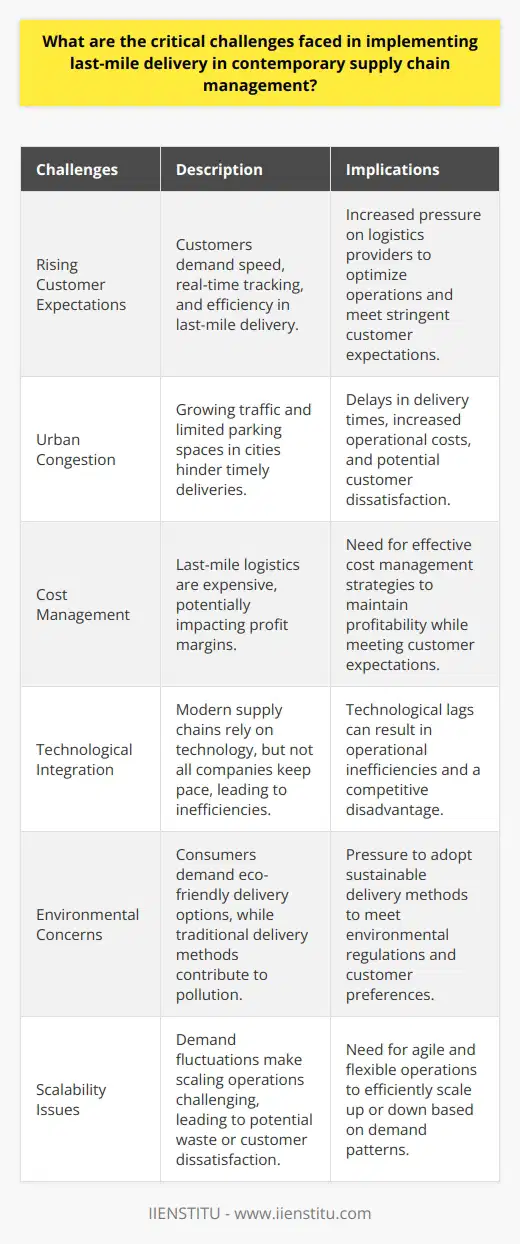
How do advancements in technology, such as AI and IoT, influence the efficiency of last-mile delivery?
Technology's Impact on Last-Mile Delivery Efficiency
The Age of AI and IoT
In today’s world, technology evolves rapidly. Artificial intelligence (AI) and the Internet of Things (IoT) are prime examples. These technologies have permeated various industries. They hold significant promise for logistics, especially last-mile delivery.
AI Streamlines Decision-Making
AI transforms data into insights. It predicts outcomes, addresses issues, and suggests improvements. AI algorithms can analyze traffic patterns. They plan optimal routes in real-time. This ensures faster deliveries. AI also automates customer service. It provides real-time updates and feedback. This keeps customers informed.
IoT Provides Real-Time Data
IoT connects devices and vehicles effortlessly. It enables real-time tracking. Sensors monitor package conditions. They ensure safe and timely arrivals. With IoT, data flows from various points. It creates a transparent delivery process.
Combined Forces for Improved Efficiency
AI and IoT work together. They enhance last-mile delivery in several ways.
- Predictive Analysis: AI uses past data to forecast issues.
- Route Optimization: AI finds the shortest, fastest routes.
- Dynamic Planning: AI adjusts plans on the fly for delays.
- Vehicle Maintenance: IoT predicts vehicle service needs.
- Transparency: IoT offers live tracking for customers.
Predictive analysis averts potential delays. Route optimization reduces fuel costs and delivery times. Dynamic planning enables couriers to avoid bottlenecks. Vehicle maintenance heads off breakdowns. Transparency increases customer satisfaction.
Challenges and Considerations
Despite clear benefits, challenges remain. Privacy and security concerns arise with data collection. Systems need robust cybersecurity protocols.
Integration poses another challenge. Legacy systems often clash with new technology. Companies must balance old and new for smooth transitions.
Looking Forward
Technology continues to advance. Soon, drones and self-driving vehicles may dominate. They will likely further streamline last-mile delivery. Tech advancements promise efficiency but require thoughtful implementation.
In conclusion, AI and IoT revolutionize last-mile logistics. They enable smarter, faster, and more reliable service. As technology advances, logistics companies must adapt. Those who do will lead in efficiency and customer satisfaction.
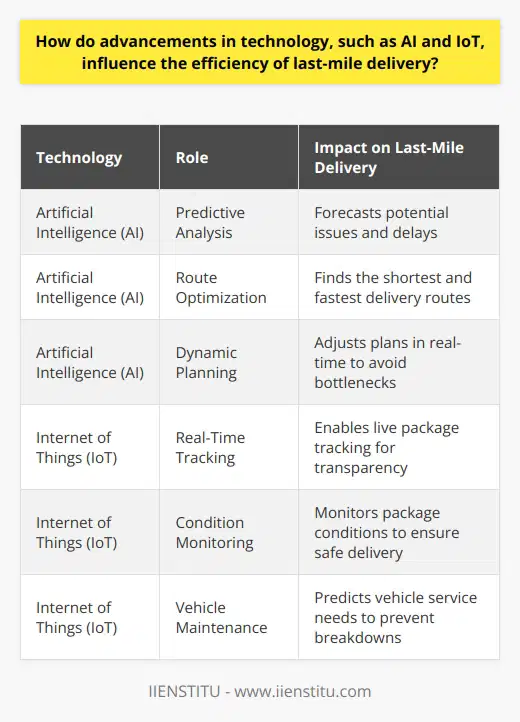
What role do geographic factors play in the shaping of last-mile delivery strategies in global supply chain networks?
Geographic Factors in Last-Mile Delivery
Influence on Delivery Speed and Efficiency
Geographic factors critically influence last-mile delivery. They shape routes, times, and costs. Diverse regions display distinct challenges. Urban areas often struggle with congestion. Rural regions, conversely, face vast distances. Each problem demands unique strategic solutions.
Direct Impact on Costs
Terrain dictates vehicle types. Rough landscapes need sturdy vehicles. Smoother terrains allow for conventional transport. Climate also plays a part. Extreme weather conditions result in special precautions. These precautions inevitably increase delivery costs.
Accessibility and Infrastructure
Infrastructure quality affects delivery speeds. Developed areas boast better roads, enhancing access. Less developed regions may lack such infrastructures. Last-mile deliveries must then adapt to these conditions. Adaptations may include using bikes or drones instead.
Environmental Considerations
Sustainability concerns are paramount today. Geographic factors necessitate eco-friendly solutions. Congested cities push for electric vehicles. Remote areas might focus on route optimization. This minimizes emissions per package delivered.
Cultural and Regulatory Influence
Local regulations vary with geography. Some areas restrict delivery times. Others emphasize safety with specific vehicle demands. Cultural habits also dictate delivery windows. For instance, siesta times in some cultures impact delivery schedules.
Adaptation to Local Needs
Consumer expectations influence delivery strategies. Geographic spread affects these expectations. Urban customers might prefer faster delivery. Rural customers may value reliability over speed. Strategies should reflect these local preferences.
Tech and Innovation in Last-Mile Delivery
Technology integration varies by geography. High-tech regions embrace innovations like autonomous vehicles. Less connected areas may stick to traditional methods. Innovations serve to bridge geographic challenges.
Economic Scaling
Scale of operations shifts with geography. Dense areas allow for economies of scale. Sparse regions might not support large-scale operations. Smaller, more flexible systems then become essential.
Strategies for Different Geographics
- Urban strategies focus on congestion mitigation.
- Rural strategies emphasize coverage and reliability.
- Coastal areas may integrate maritime elements.
- Hilly terrains require vehicles with power.
In conclusion, geographic factors shape the effectiveness and sustainability of last-mile delivery services within global supply chain networks. By understanding and adapting to the unique demands of each geographic context, businesses can optimize their delivery strategies, ensuring a balance between speed, cost, and customer satisfaction.
